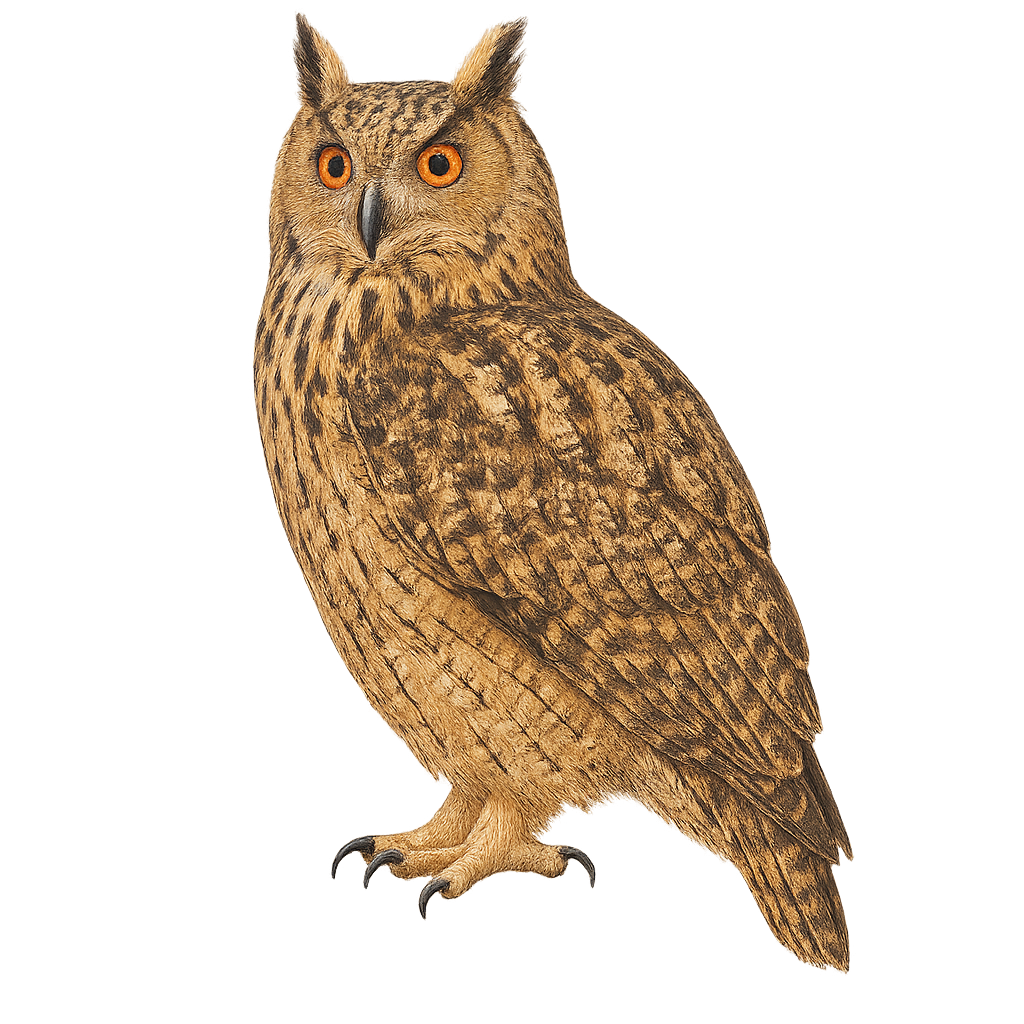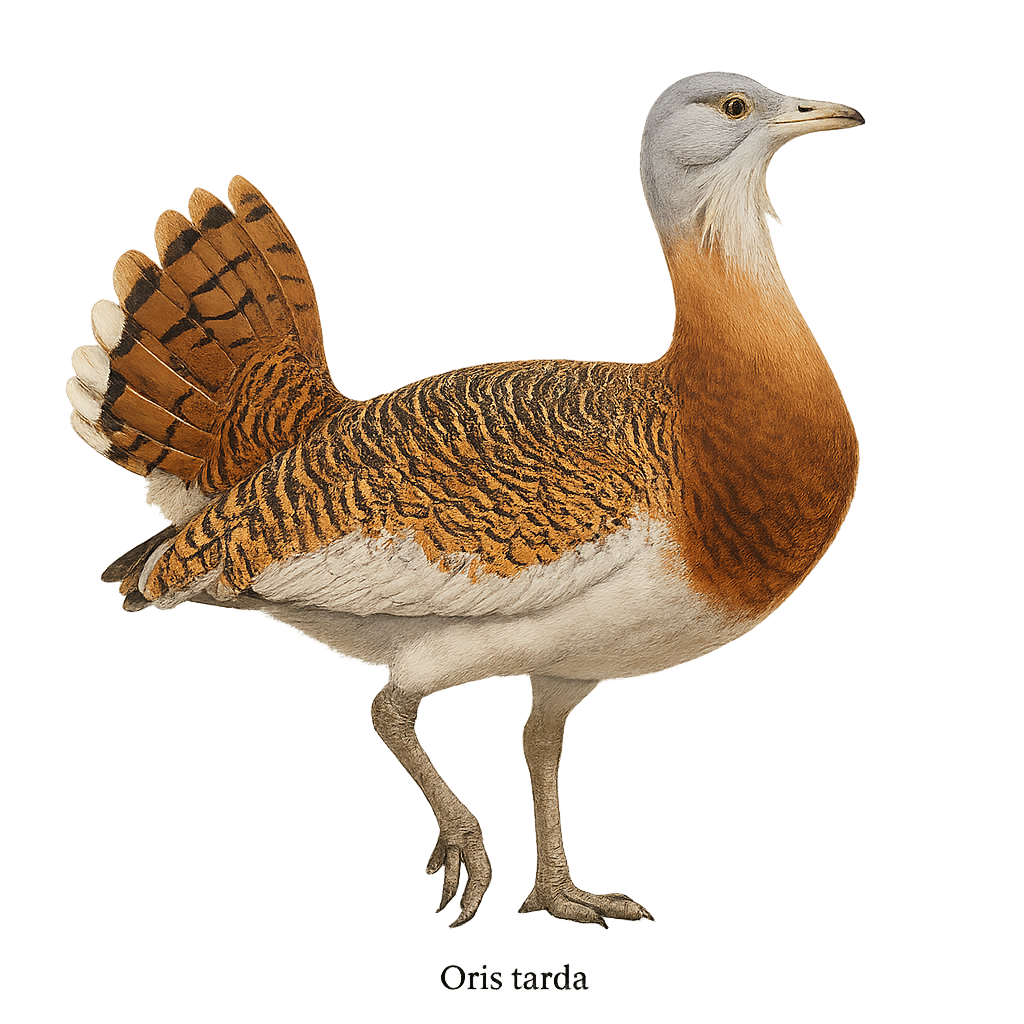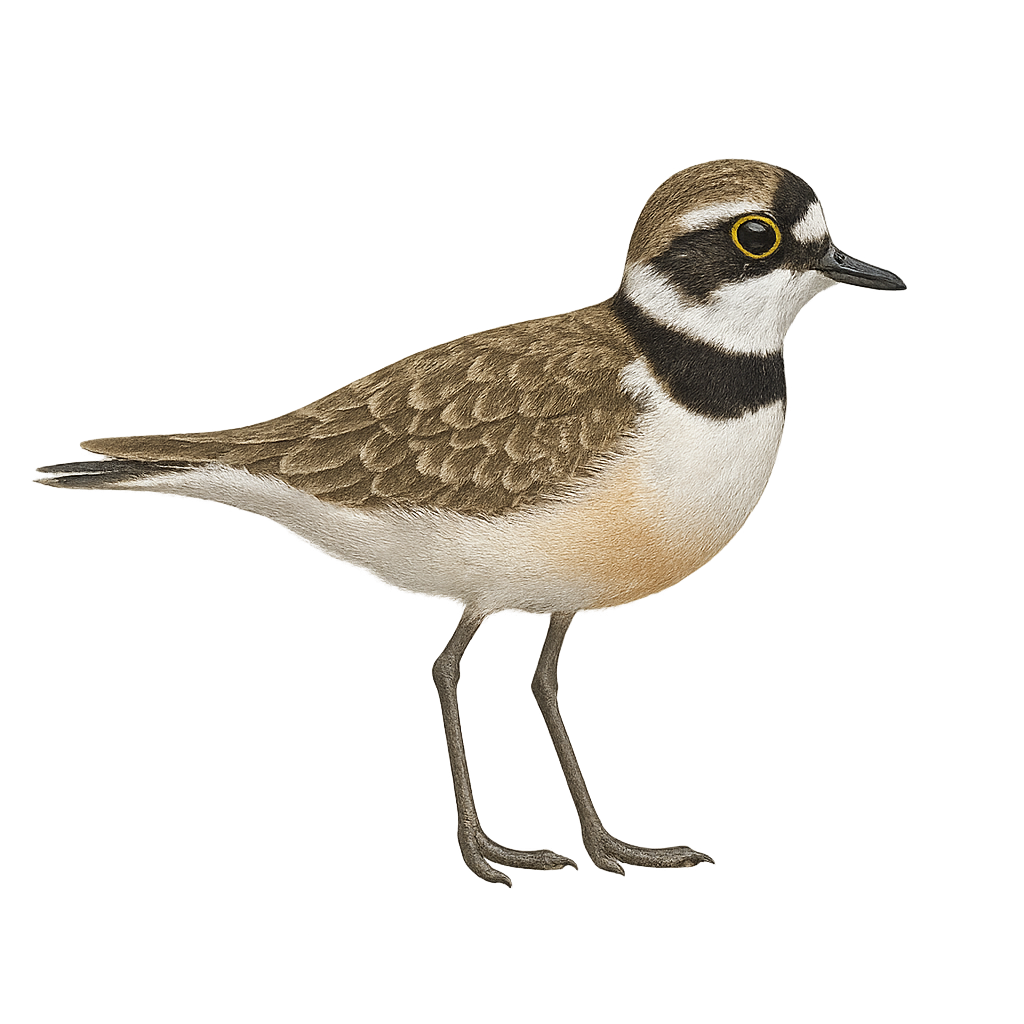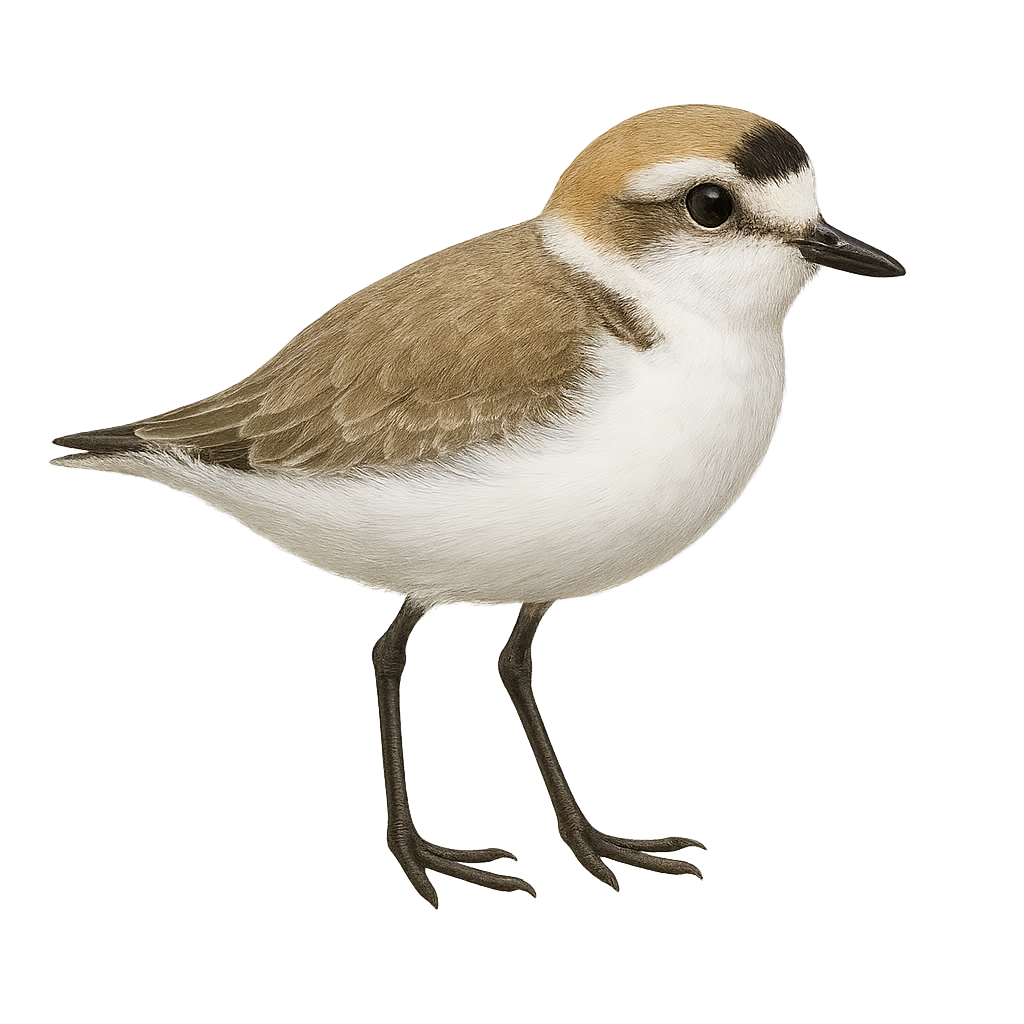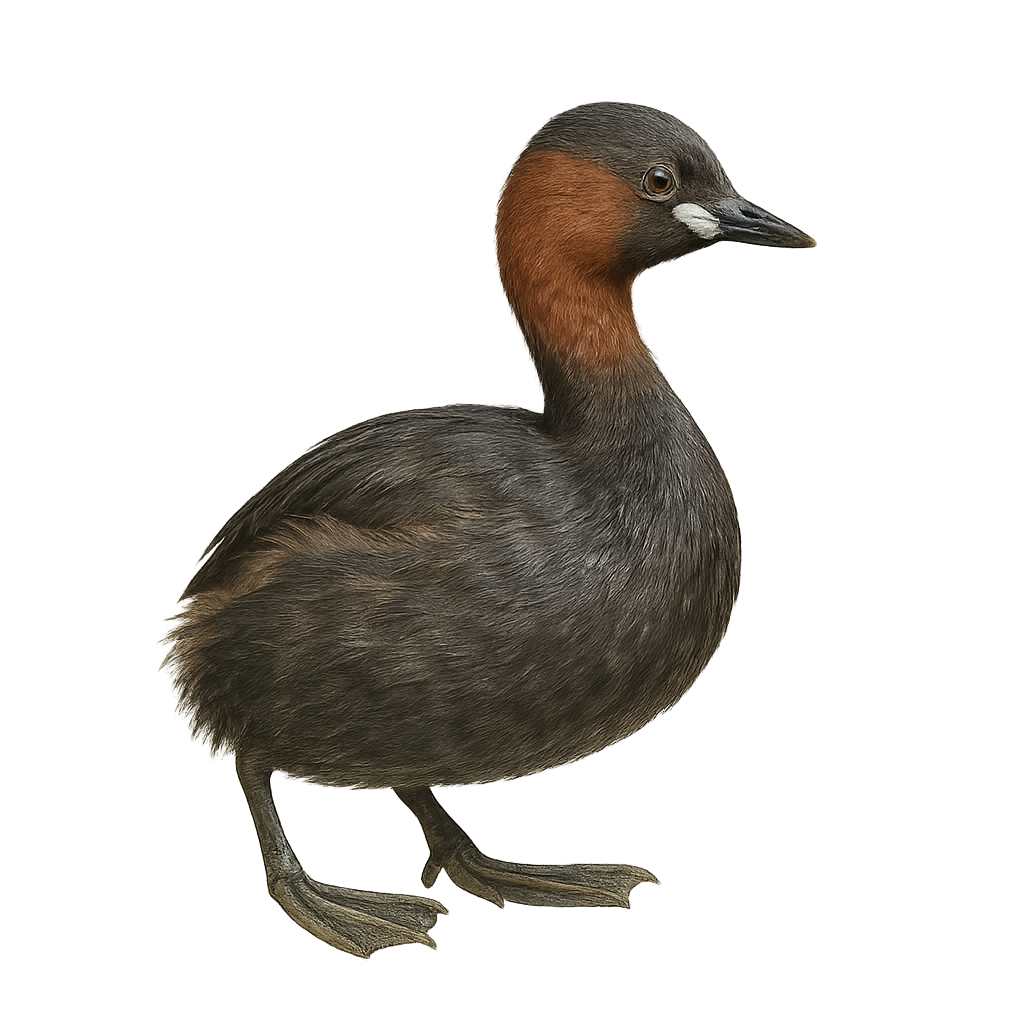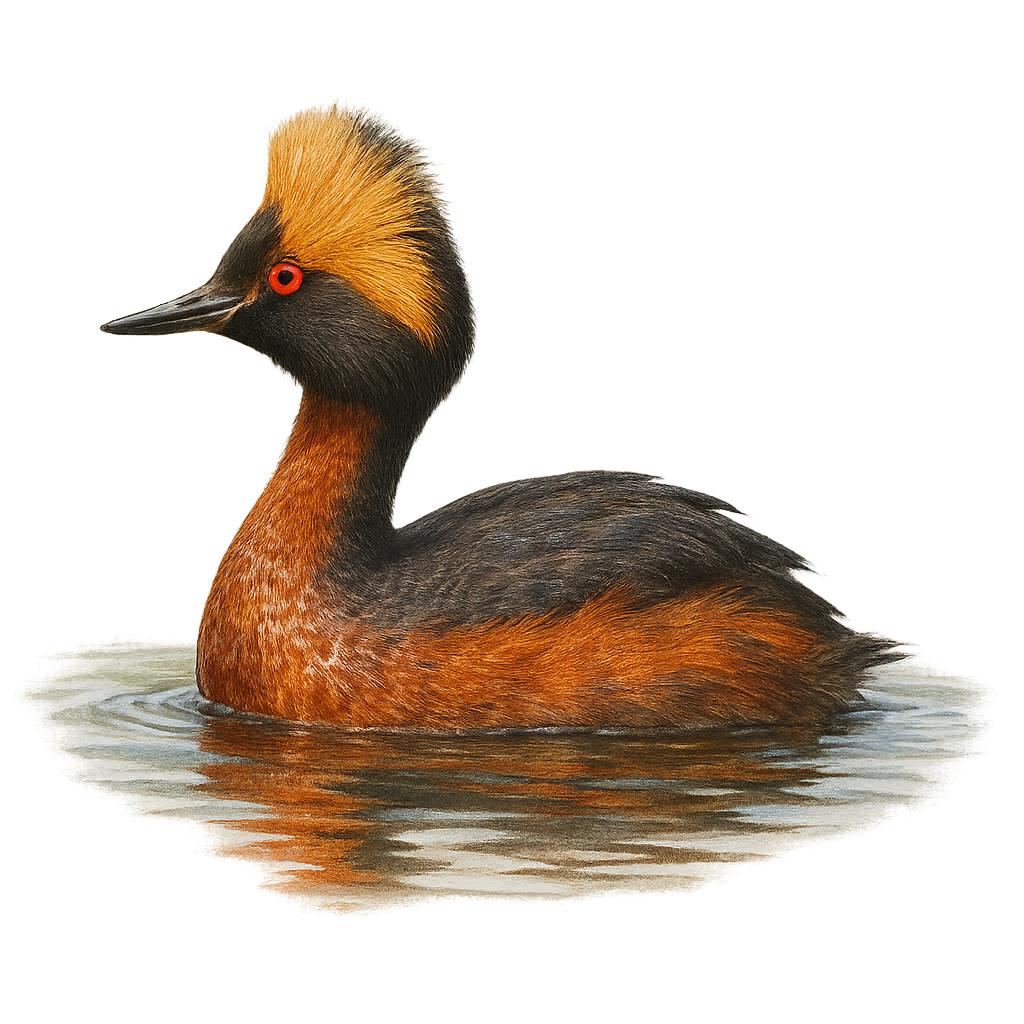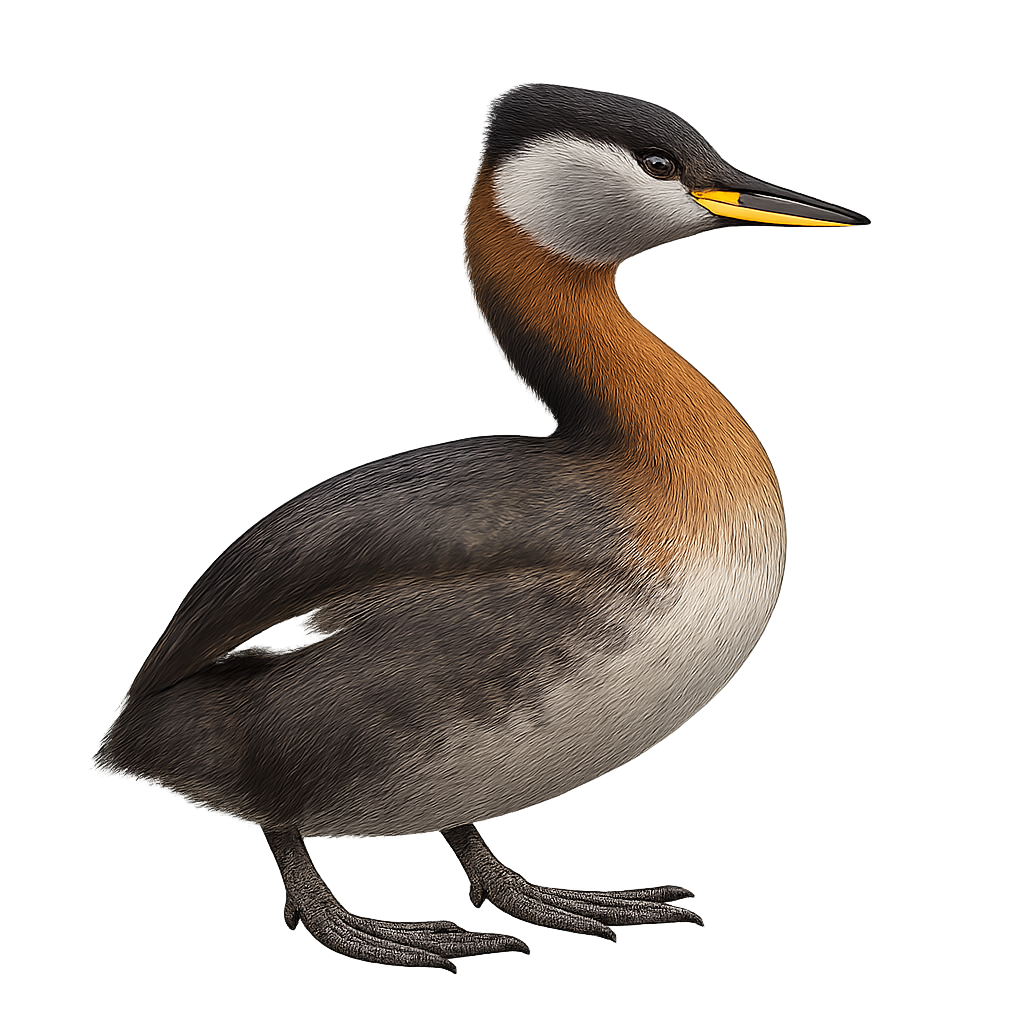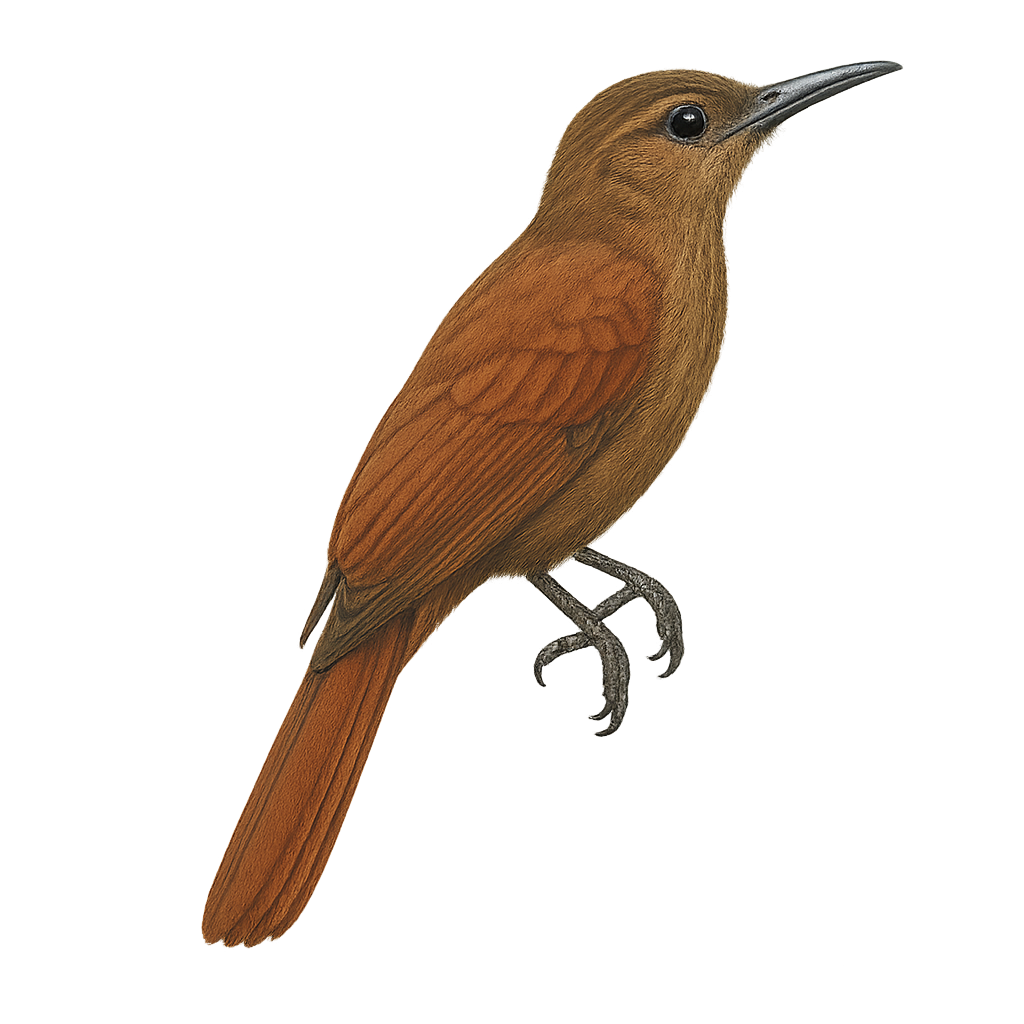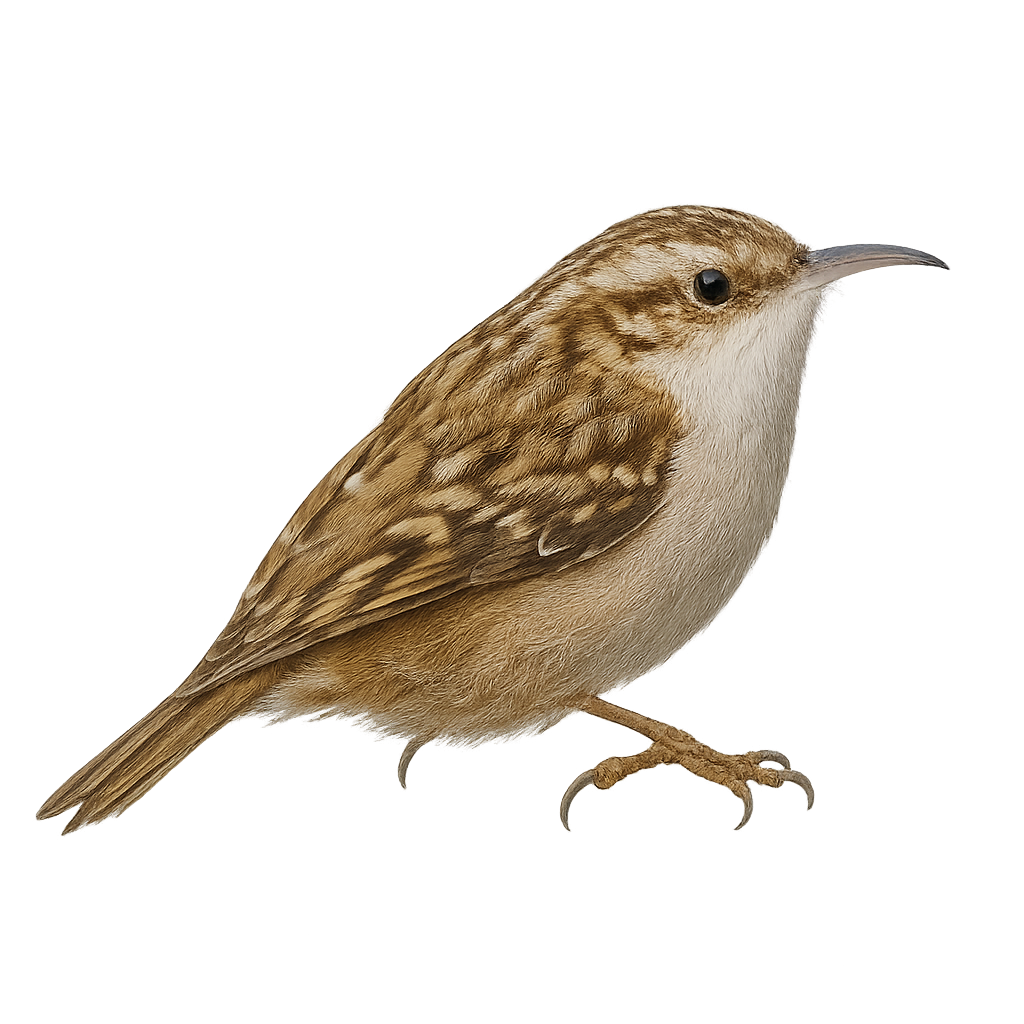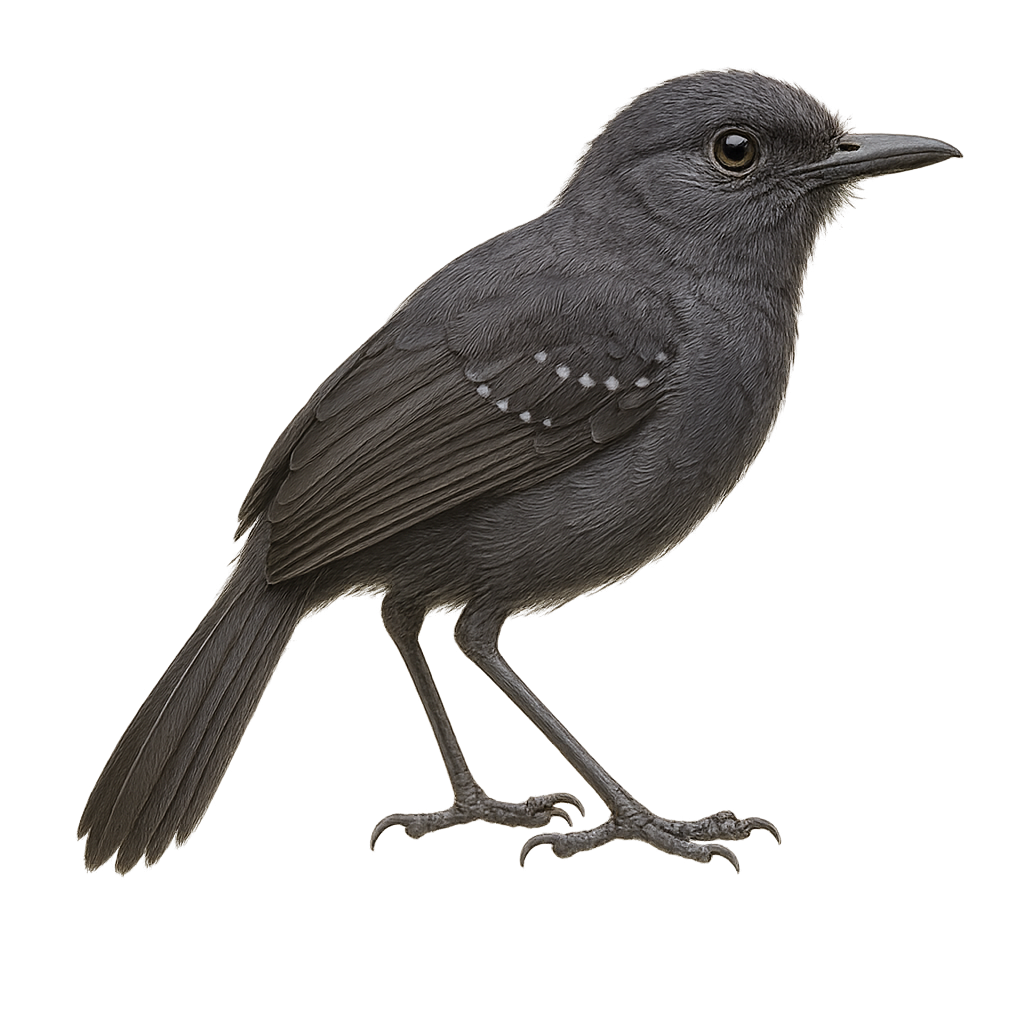The Bubo ascalaphus, or Desert Owl, is an impressive nocturnal bird of prey, primarily found in the arid regions of North Africa and the Middle East. This owl is distinguished by its sandy plumage, which allows it to blend seamlessly into its desert environment. It has large yellow eyes and prominent ear tufts. An efficient predator, it primarily feeds on small mammals, birds, and insects. Its call is a deep, resonant hoot, often heard at dusk. The Desert Owl is a solitary bird, except during the breeding season when it forms monogamous pairs. Its ability to survive in extreme conditions makes it a fascinating example of animal adaptation.
The Great Egret is a large wading bird, easily recognizable by its entirely white plumage, long legs, and long, sinuous neck. It stands about 85 to 105 cm tall, with a wingspan of 1.3 to 1.7 meters, and weighs between 800 and 1,500 g. The Great Egret has a long, slender yellow beak and bright green eyes. It primarily inhabits wetlands, marshes, estuaries, and lake shores in Europe, Africa, Asia, and the Americas. This bird is an excellent fisherman, feeding mainly on fish, crustaceans, and aquatic insects, which it captures by diving or slowly probing the water with its beak. During the breeding season, the Great Egret is known for its elegant courtship dances and its plumage adorned with long, delicate feathers, giving it a majestic appearance. While the species is not endangered, it is sometimes threatened by habitat loss and water pollution.
The great bustard, Otis tarda, is one of the heaviest flying birds. It is recognizable by its brown and white plumage, with distinctive patterns on the wings. Males, larger than females, sport a white feather mustache during the breeding season. This bird prefers vast open plains and steppes, where it feeds on plants, insects, and small vertebrates. The great bustard is a symbol of bird conservation in Europe, as it is threatened by habitat loss and hunting. It is known for its spectacular courtship displays, where males puff up their feathers to impress females.
The Wrybill, or Anarhynchus thoracicus, is an endemic bird of New Zealand, known for its uniquely right-curved bill. This small wader measures about 20 cm in length and weighs between 40 and 60 grams. Its plumage is mainly grey with a white belly and a distinctive black band across the chest. It frequents rivers and estuaries, feeding primarily on insects and small invertebrates. Its ability to move quickly over pebbles and use its bill to probe under stones is remarkable. Unfortunately, this species is threatened by habitat loss and predation by introduced species.
The Ringed Plover is a small coastal bird primarily found along beaches, estuaries, and sandy areas in Europe, North Africa, and Asia. It measures about 18 to 20 cm in length, with a wingspan of 40 to 45 cm, and weighs between 30 and 60 g. Its plumage is generally light beige with white underparts and an interrupted black ring around the neck and chest. This collar is more pronounced in males, while females have a less distinct collar. The Ringed Plover primarily feeds on small marine invertebrates and insects found in the sand or along the shore. It is often seen running along the waves, searching for food. While its population remains relatively stable, this species can be threatened by habitat loss, pollution, and human disturbances at its breeding sites.
The Double-banded Plover, Anarhynchus bicinctus, is a medium-sized bird known for its distinctive two black bands on the chest, contrasting with its grey-brown back and white belly. It is primarily found in New Zealand, frequenting sandy beaches, estuaries, and coastal wetlands. This bird is known for its ground-nesting behavior, often in open areas where it can easily watch for predators. Although generally discreet, it can become territorial during the breeding season. Its diet mainly consists of insects, small crustaceans, and worms, which it captures by quickly pecking at the ground.
The Forbes's Plover, scientifically known as Charadrius forbesi, is a medium-sized bird belonging to the Charadriidae family. It is characterized by its light brown plumage on the back and white on the belly, with a distinctive black band across the chest. Adults have a dark brown cap and a black bill. This plover is primarily found in the savannas and wet grasslands of West Africa, where it feeds on insects, worms, and small crustaceans. It is often seen in small groups, moving quickly on the ground in search of food. Although its conservation status is currently considered "least concern," habitat degradation could pose a future threat.
The Subantarctic dotterel, or Zonibyx modestus, is a small coastal shorebird with subtle plumage, typically found along sandy shores and lagoons of southern South America. Its pale gray-brown back, white belly, and faint light eyebrow provide excellent camouflage in open habitats. It nests on the ground near water and feeds on aquatic invertebrates, insects, and small crustaceans. A discreet species, it is vulnerable to human disturbance on beaches. Its population is generally considered stable but may be locally threatened.
The Forbes's Plover, or Charadrius forbesi, is a medium-sized bird belonging to the Charadriidae family. It is primarily found in West Africa, particularly in Nigeria, Ghana, and Ivory Coast. This bird prefers open habitats such as grassy plains and wetlands. It is characterized by its brown-grey plumage with a black breast band and white belly. The beak is black, and the legs are yellowish. The Forbes's Plover is a diurnal bird, often seen foraging for food, mainly insects and small invertebrates, on the ground. Although its conservation status is currently considered of least concern, habitat degradation could pose future threats.
The Mountain Plover, Anarhynchus alticola, is a bird species primarily inhabiting mountainous regions. This plover is recognizable by its discreet plumage, usually gray-brown, which allows it to blend into its rocky environment. It is often observed in small groups, feeding on insects and small invertebrates. Its ability to survive at high altitudes demonstrates its remarkable adaptation to harsh conditions. Although its habitat is relatively isolated, it is vulnerable to human disturbances and climate change, which threaten its breeding and feeding areas. Conservation of this bird requires special attention to preserve its natural habitats.
The Killdeer is a medium-sized bird, easily identifiable by its two distinctive black bands across the chest and its piercing call. It often frequents open areas such as beaches, fields, and grasslands. This bird is very active and uses an ingenious distraction technique to keep predators away from its nest, pretending to be injured to draw attention. The Killdeer is a partial migrant, moving south in winter. It primarily feeds on insects, worms, and crustaceans, which it finds by foraging on the ground. Its ability to adapt to various habitats allows it to thrive in many regions of North America.
The Mountain Plover, Anarhynchus montanus, is a fascinating bird primarily inhabiting mountainous regions. It is distinguished by its discreet plumage, often gray-brown, which allows it to blend into its rocky environment. This medium-sized plover has a short, straight bill, adapted to its diet mainly consisting of insects and small invertebrates. It is often observed in small groups, moving quickly on the ground in search of food. Although generally discreet, the Mountain Plover can be quite vocal, especially during the breeding season. Its preferred habitat includes alpine meadows and rocky plateaus, where it can nest safely from predators.
The Wrybill, Anarhynchus nivosus, is a unique bird species primarily endemic to New Zealand. This small shorebird is easily recognizable by its distinctively right-curved bill, a rare adaptation in the avian world. It mainly inhabits gravel riverbeds and estuaries, where it feeds on invertebrates. Its subtle coloration, with grey and white plumage, allows it to blend into its surroundings, providing protection from predators. The Wrybill is a migratory bird, moving to coastal areas in winter. Although its population is stable, it is considered vulnerable due to habitat loss and human disturbances.
The Pied-billed Grebe, scientifically known as Podilymbus podiceps, is a small water bird easily identified by its thick, black-banded bill. It inhabits ponds, lakes, and marshes across North and South America. Adapted to aquatic life, its legs are positioned towards the rear of its body, making it clumsy on land but highly agile in water. It primarily feeds on fish, aquatic insects, and crustaceans. During the breeding season, it constructs a floating nest from aquatic vegetation. Adults are often solitary or found in small groups, and their brownish plumage helps them blend into their surroundings.
The Eared Grebe is a small grebe measuring between 28 and 35 cm in length with a wingspan of 57 to 59 cm. In breeding plumage, it has a black head adorned with golden feathers forming a crest, a black neck, a black chest, and chestnut flanks. In non-breeding plumage, it is more subdued, with a black back, black cap, white cheeks, and a white belly. It frequents shallow lakes and ponds, rich in aquatic vegetation, where it primarily feeds on small fish and aquatic invertebrates. Reproduction occurs in summer, with a clutch of 3 to 6 eggs laid in a floating nest. The young are capable of swimming shortly after hatching and can be carried on the parents' backs. A migratory species, it winters in the Mediterranean and warmer regions. Listed as Least Concern by the IUCN.
The Australasian Grebe, or Tachybaptus novaehollandiae, is a small waterbird found mainly in Australia and New Guinea. It is recognizable by its dark brown plumage, black throat, and short, pointed bill. During the breeding season, a bright yellow patch appears at the base of its bill. This grebe prefers freshwater bodies such as lakes and ponds, where it feeds on small fish, aquatic insects, and crustaceans. It is an excellent swimmer and diver, capable of staying underwater for extended periods to hunt its food. Although generally discreet, it can be seen swimming on the surface or hiding among reeds.
The Little Grebe is the smallest European grebe, measuring about 29 cm in length with a wingspan of 40 to 45 cm. In breeding plumage, it has a bright chestnut throat and nape, giving it its name, and a yellow spot at the base of the bill. In non-breeding plumage, it is more subdued, with a dark brown back and a light belly. It inhabits wetlands such as lakes, ponds, marshes, and reed beds, where it can easily hide. It feeds primarily on aquatic insects, small crustaceans, tadpoles, and small fish. Reproduction occurs from March to July, with one or two clutches of 4 to 7 eggs each. The young are precocial and can swim and dive immediately after hatching. A partial migrant, it winters in the milder regions of Europe. Listed as Least Concern by the IUCN.
The Horned Grebe, or Podiceps auritus, is a medium-sized waterbird known for its striking breeding plumage. During the breeding season, it displays a black head with golden feather tufts resembling horns, a dark back, and a white belly. Outside the breeding season, its plumage becomes duller, with gray and white tones. This grebe is an excellent swimmer and diver, feeding mainly on small fish, aquatic insects, and crustaceans. It inhabits freshwater lakes and ponds, often surrounded by dense vegetation. Although its population is stable in some areas, it is declining in others, primarily due to habitat loss and pollution.
The Great Crested Grebe is the largest of the European grebes, measuring between 46 and 51 cm in length with a wingspan of 85 to 90 cm. In breeding plumage, it has a black crest, a reddish collar, and a long, pointed bill. In non-breeding plumage, it is more subdued, with a dark back and a light belly. It inhabits shallow lakes, ponds, and marshes, often surrounded by aquatic vegetation. It primarily feeds on fish, aquatic insects, and small crustaceans. Reproduction occurs in spring and summer, with a clutch of 3 to 6 eggs laid in a floating nest. The young, with black and white striped plumage, are often carried on the parents' backs. A partial migrant, it winters in the Mediterranean and warmer regions. Listed as Least Concern by the IUCN.
The red-necked grebe is a water bird found primarily in lakes, ponds, and wetlands across Europe and Asia. It is easily recognized by its contrasting plumage, with a reddish-orange head and neck during the breeding season and more subdued plumage outside of it. This grebe primarily feeds on fish, aquatic invertebrates, and aquatic plants, which it captures by diving underwater. It is also known for its spectacular courtship displays.
The Least Grebe, or Tachybaptus dominicus, is a small waterbird belonging to the family Podicipedidae. It is the smallest grebe, measuring about 21 to 27 cm in length with a wingspan of 40 cm. Its plumage is generally dark gray above and paler below, with a brownish tint on the flanks. It has a short, pointed, often black bill. This grebe is primarily found in freshwater habitats such as ponds, marshes, and lakes with dense vegetation. It is an excellent diver, feeding mainly on small fish, aquatic insects, and crustaceans. Its range extends from the United States to northern South America.
The Narrow-billed Woodcreeper is a medium-sized bird, distinguished by its long, slender bill, perfect for probing bark and crevices in search of insects. Its brownish plumage, with lighter shades on the belly, allows it to blend seamlessly into its forest habitat. This bird is primarily arboreal, moving nimbly along tree trunks. It is often seen in small groups or pairs, especially during the breeding season. The Narrow-billed Woodcreeper is a resident of tropical and subtropical forests but can also be found in open wooded areas. Although relatively common, preserving its habitat is crucial for its long-term survival.
The Narrow-billed Woodcreeper is a fascinating bird, primarily found in the tropical forests of South America. It is distinguished by its long, slender bill, perfect for extracting insects from tree bark. Its reddish-brown plumage allows it to blend seamlessly into its environment, making it difficult to spot. Often seen climbing tree trunks, it uses its stiff tail for support. Though discreet, its melodious song often resonates through the canopy. This bird plays a crucial role in the ecosystem by controlling insect populations. Its ability to adapt to various habitats, including degraded forests, is a testament to its resilience.
The Plain-brown Woodcreeper, scientifically known as Dendrocincla fuliginosa, is a medium-sized bird belonging to the Furnariidae family. It is primarily found in the humid tropical forests of Central and South America, where it is recognized by its uniform brown plumage and slender silhouette. This bird is often seen climbing tree trunks, using its slightly curved beak to search for insects and other small invertebrates hidden under the bark. Although discreet, its melodious song can be heard through the dense canopy. The Plain-brown Woodcreeper plays an essential role in the forest ecosystem by helping control populations of harmful insects.
The Olive-backed Woodcreeper is a small bird, about 15 cm in length, characterized by its olive-brown plumage and greyish head and neck. Its slender, slightly curved bill is perfect for probing bark in search of insects. This species is primarily found in the tropical and subtropical forests of Central and South America. It is often seen climbing tree trunks, using its sharp claws for grip. Although discreet, its melodious song is easily recognizable. It plays a crucial role in the ecosystem by controlling insect populations.
The Hodgson's Treecreeper, or Certhia himalayana, is a small, elusive bird found in the coniferous forests of the Himalayas. It is characterized by its brown, speckled plumage that allows it to blend seamlessly with tree bark. Its slender body and thin, curved beak are perfectly adapted for its arboreal lifestyle. It primarily feeds on insects, which it extracts from crevices in tree trunks. This bird is often seen spiraling up trees, using its stiff tail as support. Although not very shy, it is difficult to spot due to its camouflage. Its song is a high-pitched trill, often heard before the bird is seen.
The treecreeper is a small woodland bird found primarily in mixed forests, hedgerows, and gardens across Europe and Asia. It is easily recognized by its streaked brown plumage, light belly, and its distinctive movement as it climbs tree trunks and branches in a spiraling fashion. It primarily feeds on insects found in the cracks of tree bark.
The Long-tailed Tapaculo, or Drymophila caudata, is a captivating bird found in the humid forests of South America, particularly in the Andes. This medium-sized bird, measuring about 18 cm in length, is notable for its long, slender tail and reddish-brown plumage, adorned with subtle patterns that help it blend into its surroundings. It is often heard before seen, thanks to its distinctive and melodious song. The Long-tailed Tapaculo is a shy bird, preferring dense undergrowth where it primarily feeds on insects and other small invertebrates. Despite its reclusive nature, it plays a crucial role in the forest ecosystem by controlling insect populations.
The White-flanked Antwren, Herpsilochmus axillaris, is a small bird belonging to the Thamnophilidae family. It is primarily found in lowland tropical rainforests in South America, particularly in Peru, Colombia, and Ecuador. This bird is characterized by its subtle plumage, with white flanks contrasting against its grey body. Often seen in pairs or small groups, it actively moves through foliage in search of insects. Although it is relatively tolerant, it can be challenging to spot due to its dense habitat. Its presence is an indicator of the health of the forest ecosystems it inhabits.
The Dusky Antbird, or Cercomacroides tyrannina, is a small bird from the Thamnophilidae family, primarily found in the humid tropical forests of Central and South America. It is characterized by its dark gray, almost black plumage, and piercing red eyes. Males and females exhibit sexual dimorphism, with females having browner hues. This bird is often seen in pairs or small groups, moving through the undergrowth in search of insects. Although discreet, its distinctive call, a high-pitched whistle, often reveals its presence. The Dusky Antbird plays a crucial role in the ecosystem by regulating insect populations.


